This historical timeline shows the journey of Yang style Tai Chi, from a private Chinese family art, into the English-speaking world.
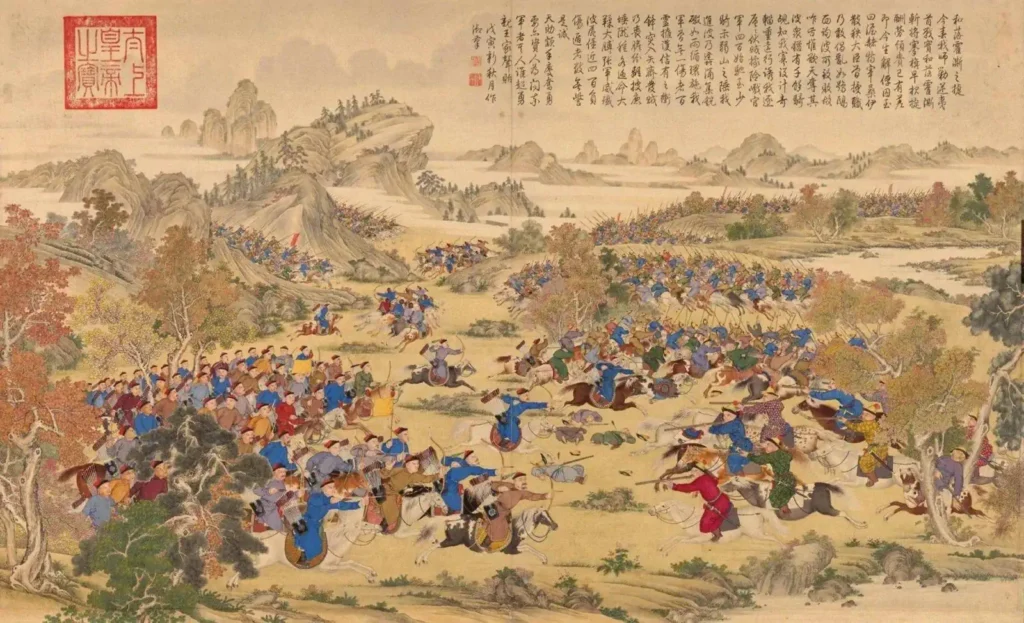
1799
- Yang Luchan, founder of Yang style Taijiquan, is born in Yongnian County, Hebei Province, China.
1852
- Yang Luchan moves to Beijing and teaches private lessons in his style of martial art.
1861
- Influential Chinese scholar Feng Guifen argues the necessity of adopting Western military technology.
1864
- The Taiping Rebellion is crushed by Qing Dynasty forces in China. Both sides of this martial conflict use firearms. The era of “cold weapons” — battles decided by the skillful use of sword and spear — has already ended.
1872
- Yang Luchan dies in Yongnian County.
- John Dudgeon, M.D., describes Chinese Kung Fu as a form of preventative medicine.
1881
- Li Yiyu records a copy of The Tai Chi Classics, adding “It is not known who Taiji Boxing came from.” (太極拳不知始自何人.)
1883
- Yang Chengfu (杨澄甫) is born. Son of Yang Jianhou, grandson of Yang Luchan.
1896
- The first modern Olympic Games are held in Greece, to promote trade and diplomacy through sport.
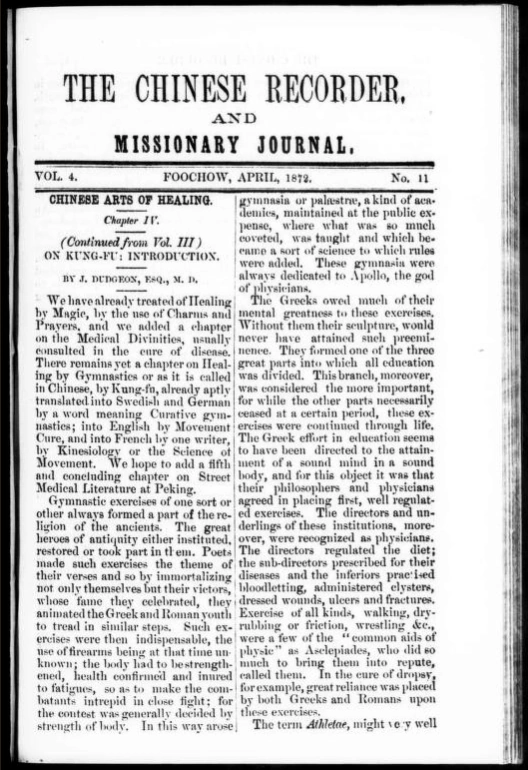
c. 1904
- President Theodore Roosevelt receives private Jujitsu lessons in the White House.
- Yang Jianhou adopts Tian Zhaolin (田兆麟) as a godson, and begins training him alongside Chengfu in the family art.
1907
- The Seattle Dojo holds its first regional Judo tournament.
1910
- Public martial arts institutes open in China, including the Tianjin Chinese Warriors Association (天津中华武士会), and Chin Woo Athletic Association (精武体育会). Their curriculums include various styles of Taijiquan.
1912
- Monarchy ends, and the Republic of China is established.
- Yang Chengfu begins teaching Taijiquan exercises to the Beijing public at Central Park (now Zhongshan Park 北京中山公园). Indoor lessons are supervised by his father.
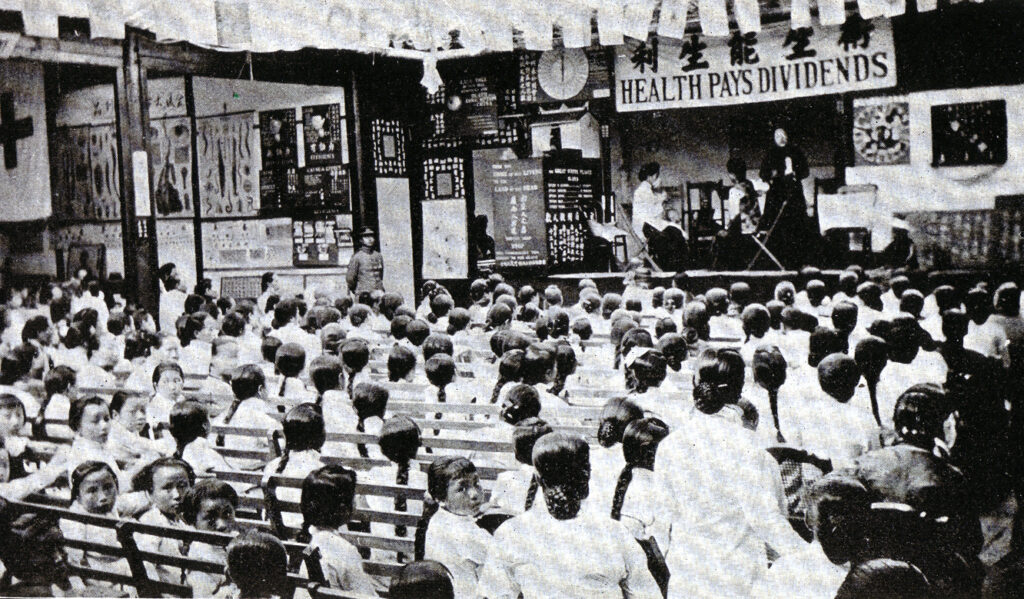
1914
- Wu Jianquan, Sun Lutang, Yang Chengfu and his brother Yang Shouhou offer public Tai Chi classes at the Beijing Sports Research Institute (北平体育研究社).
1915
- Scholar and martial arts expert Sun Lutang (孙禄堂) writes his first book, “A Study of Xingyi Boxing” (形意拳学). Sun argues that Chinese boxing is a subtle, noble and patriotic art of self-cultivation; not a coarse and vulgar profession, as it had been widely understood.
1917
- Yang Jianhou dies. Yang Chengfu and other experts vigorously debate which frame(s) and variation(s) of Taijiquan should become the new standard.
1919
- Tian Zhaolin leaves Beijing for Zhejiang.
1921
- Xu Yusheng (许禹生) writes “Taiji Boxing Postures Explained.” This book recognizes Yang Chengfu’s variation as the standard model.
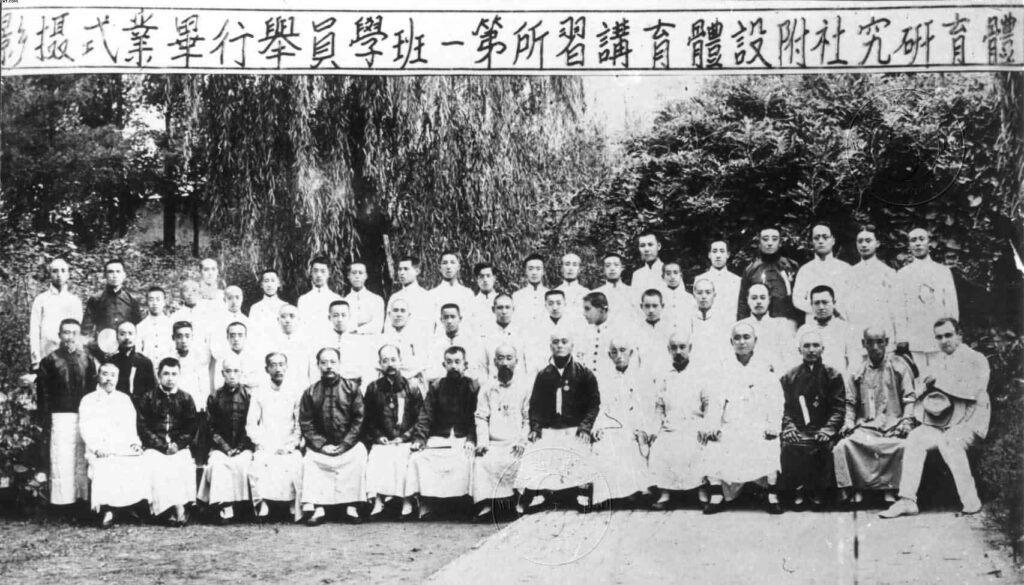
1925
- Chen Weiming (陈微明) establishes the Zhirou Boxing Club (致柔拳社) in Shanghai.
- Chen Weiming collaborates with his teacher, Yang Chengfu, to publish “The Art of Taiji Boxing” (太极拳术). The book includes both written instruction and detailed photographs.
1927
- Li Tianji (李天骥) begins studying Yang style Taijiquan.
1934
- Chiang Kai-shek extols a synthesis of Confucian and Christian ethical teachings to reform Chinese society.
- Gu Liuxin (顧留馨), casual student of Yang and Wu style Taijiquan, joins the Communist Youth League of China.

1935
- Chu Minyi (褚民誼) shares his Wu style Taijiquan practice on film.
1936
- Yang Chengfu dies. Taijiquan leadership is fractured and split between Tian Zhaolin, Chen Weiming, Wu Jianquan (吴鉴泉), Yang Shouzhong (杨守中) and many others.
1938
- Tian Zhaolin moves from Hangzhou to Shanghai, and begins teaching locally.
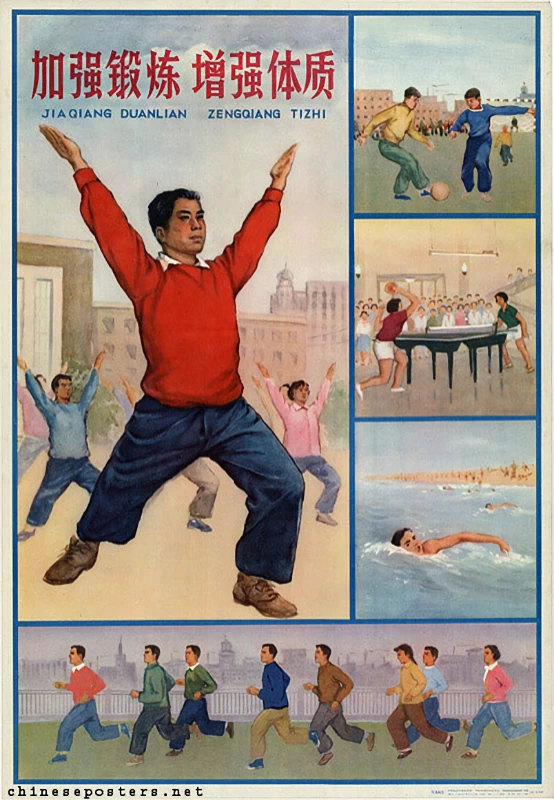
1939
- Choy Hok-Peng (Cai Hepeng; 蔡鹤朋), a student of the late Yang Chengfu, arrives in San Francisco from Guangzhou. He begins teaching Taijiquan at the local branch of the Zhirou Boxing Club.
c. 1940
- In Beijing newspapers, boxing master Wang Xiangzhai (王芗斋) laments the recent deterioration of Taijiquan.
For the last twenty years, most people who have studied this boxing have not been able to differentiate right and wrong, and even if someone has… he has not been capable of putting it into practice… So ruined is [Taijiquan] that it has become useless, this is really deplorable. I wish that the powerful members of this school would promptly and strictly clean it up.
Wang Xiangzhai
1944
- Fu Zhongwen (傅鈡文), student of Yang Chengfu, establishes the Yongnian Tai Chi Association (永年太极拳) in Shanghai.
1947
- The first English-language Tai Chi manual is published. It is an adaptation of Chen Yanlin’s 1943 book, 太極拳刀劍桿散手合編.
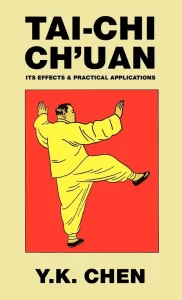
c. 1950
- Gu Liuxin, now a local leader in the Communist Party, proposes a closer relationship with the leadership of Taijiquan. Tian Zhaolin resists. Fu Zhongwen cooperates.
1952
- Dancer and choreographer Sophia Delza returns to the United States, after a four-year residence in Shanghai. While in China, she had learned Wu style Tai Chi. She now begins teaching it to her American dance students.
1954
- Sophia Delza holds a public Tai Chi exhibition at the Museum of Modern Art.
1955
- Da Liu offers public Tai Chi classes at the China Institute in Manhattan.
1956
- Li Tianji, now chief coach of the China Wushu Team, directs a one-month effort to create a new and simplified version of Taijiquan. This form is endorsed by the National Sports Commission (国家体委) of the Chinese Communist Party.
1957
- Gu Liuxin travels to Vietnam on a diplomatic assignment, and teaches the new 24 Forms Simplified Taijiquan (二十四式 简化太极拳) to Ho Chi Minh.
1958
- Xie Bingcan joins the Yongnian Association in Shanghai.
1959
- Choy Kam-Man (蔡錦文) begins teaching in the California Bay Area.
- Gerda Geddes performs Tai Chi on a British television broadcast.
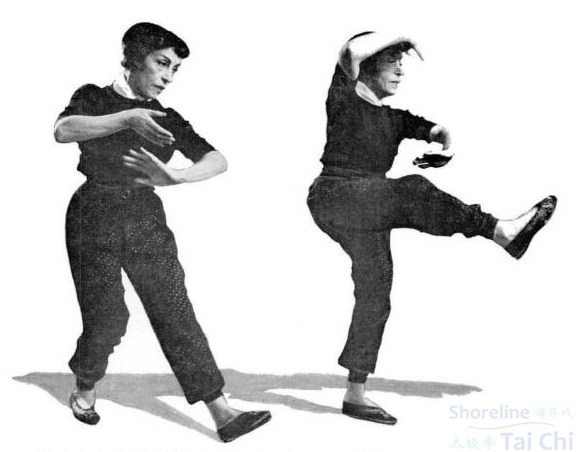
1960
- Sophia Delza is profiled in Popular Mechanics magazine.
1961
- Bruce Lee demonstrates Tai Chi and Kung Fu for KCTS 9 public television in Seattle.
- Sophia Delza publishes her book, T’ai-Chi Ch’uan: Body and Mind in Harmony.
1963
- Fu Zhongwen writes the new standard Chinese textbook for Tai Chi Chuan.
1964
- Black Belt Magazine publishes a three-part serial on “The Origin of T’ai Chi Ch’uan.” The author opines, “The number of reliable books on this subject is dismally microscopic…many writers based their entire conception of this art on fiction and popular hearsay.”
- Zheng Manqing (Cheng Man-ch’ing; 郑曼青) teaches his Yang style short form on Canal Street in Manhattan.
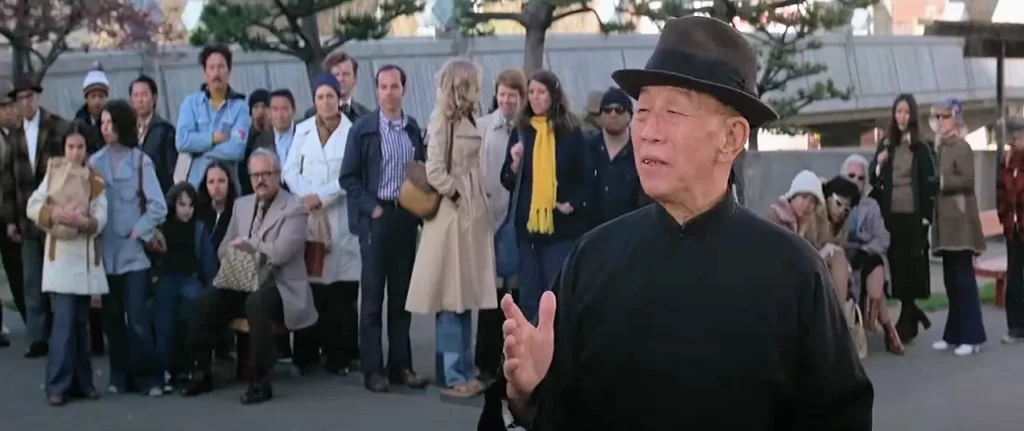
1965
- Kuo Lien-ying (郭連蔭) offers Guang Ping Yang style Taijiquan lessons in San Francisco’s Chinatown.
- Fook Yeung teaches a synthesis of Tai Chi and other Kung Fu styles in Seattle.
1966
- Bruce Lee shows Chinese Kung Fu on The Green Hornet television series.
- Fu Zhongwen is arrested and jailed by the Communist Party, during the first year of the Cultural Revolution. (He is later found innocent.)
1967
- Revolutionaries start to reform the public art of Tai Chi, choreographing simple new forms with patriotic melodies, and replacing “feudal terminology” with praise for Chairman Mao.
1968
- William C. C. Chen featured in Black Belt Magazine as “The Barnum of Brawl.”
1969
- Mao Zedong declares that Taijiquan is no longer a threat to the revolution.
- Asian Fighting Arts, a new book by Donn F. Draeger and Robert W. Smith, features a section on Tai Chi.
1974
- Hong Kong debut of Shaw Brothers’ action movie The Shadow Boxer (太極拳), featuring Cheng Tin-Hung (鄭天熊).
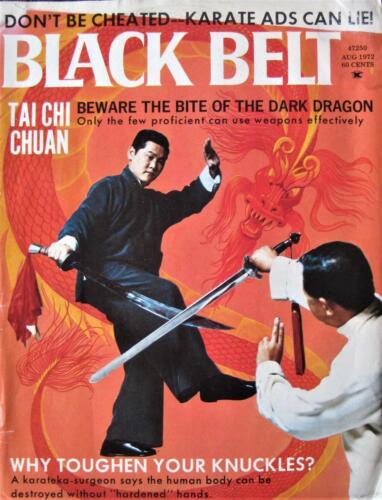
1977
- Marvin Smalheiser’s T’AI CHI Magazine launches in the United States.
- Jou Tsung-Hwa organizes the first annual “Zhang San Feng Festival” in New York City.
1978
1979
- Shaolin Temple (少林寺) is crumbling and is nearly deserted. A historical fiction about the temple is shot on location, starring Jet Li.
1981
- Shaolin Temple becomes the highest-grossing Chinese film in history. The temple and surroundings are completely restored, restaffed, and opened for tourism.
1984
- Jou Tsung-Hwa establishes the Tai Chi Farm, a school and retreat center, in Warwick, New York.
1989
- Yang style Tai Chi featured in the movie Road House.
1990
- Zhang Luping, former Taiji champion of Zhejiang and student of Xie Bingcan, demonstrates at “A Taste of China” exhibition in Virginia.
1993
- Yang Zhenduo, son of Yang Chengfu, leads a week-long Taiji retreat in Maryland.
…We have been losing pieces of our art, as each generation takes a cut for themselves of the knowledge they were taught. If this continues, this art will become no more than slow motion aerobics. This must stop now.
Zhang Luping
1994
- Xie Bingcan begins teaching Yang and Wu style Taijiquan in Bellevue, Washington.
- Fu Zhongwen and grandson James Fu attend the International Kuo Shu Championship in Richmond, Virginia.
- Stanley Henning writes “Ignorance, Legend and Taijiquan.” He notes many errors, omissions, and misrepresentations in the popular history of Tai Chi, going nearly all the way back to its inception.
1996
- Xie Bingcan inaugurates the Northwest Tai Chi and Qigong Association, surrendering the Yongnian Association name to Fu Zhongwen’s son.
1998
- Yang Zhenduo and grandson Yang Jun establish the International Yang Family Tai Chi Association headquarters in Seattle, Washington.
2003
- Chris Marshall joins the Yang Family Tai Chi Association.
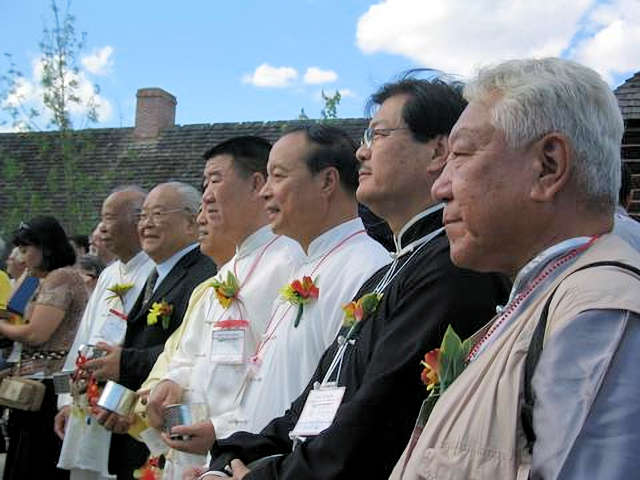
2006
- Leaders of all major Taijiquan lineages meet for the first time outside of China.
2009
- Chris Marshall joins the Northwest Tai Chi and Qigong Association.
© Shoreline Tai Chi. All rights reserved.
See also: The Real History of Qi and the Internal Martial Arts